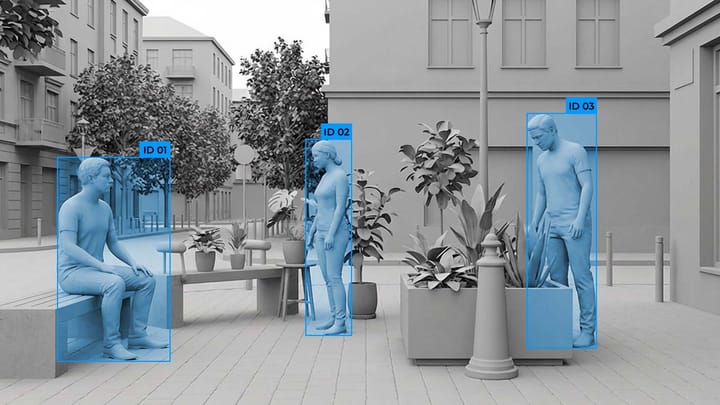On-Device Real-Time Labeling Systems for Autonomous Applications

Machine learning teams spend most of their time training on unstructured data instead of building models. As a result, industries striving for autonomy need intelligent approaches to data processing.
We are seeing a shift in how AI applications process information. Modern solutions now analyze and classify input data directly on devices. This approach combines edge computing with adaptive machine learning models to deliver results faster.
Built-in annotation capabilities locally give companies seamless operational flow while maintaining privacy standards. Modern tools automate complex tasks such as sensor data fusion analysis and 3D object recognition.
Key Takeaways
- Modern annotation tools reduce data preparation time.
- Transient computing enables localized processing for latency-sensitive applications.
- Healthcare and automotive have the highest adoption rates.
- Hybrid human-AI verification ensures accuracy in mission-critical systems.
- Implementation requires assessment of hardware compatibility and use case specifics.
Introduction to Real-Time Labeling Systems on Devices
Autonomous machines have a significant challenge: processing information faster than humans while maintaining accuracy. On-device annotation tools solve this problem by combining edge computing with AI-based pattern recognition and low-latency inference, enabling faster, real-time decision-making.
Technology Definition
These approaches use embedded neural networks to analyze input data locally. They process sensor signals and visual data on hardware, such as GPUs or specialized chips, unlike traditional methods. Key components include:
Why this matters for autonomous applications
The main advantage is speed, in industries such as medicine and autonomous driving, where you need to respond quickly to changes, as minutes of delay can be fatal.
This approach also addresses privacy concerns. Sensitive information, such as patient records or real-time pipeline labeling data, remains secure on local devices.
Understanding the Need for Real-Time Labeling in Autonomous Applications
Autonomous technologies can interpret their environment faster than humans. Instantaneous data categorization is the foundation of this capability, enabling decisions to be made in seconds in critical scenarios. From emergency response drones to robotic surgical suites, latency is not the worst outcome.
Role in Training AI Models
High-quality, annotated datasets serve as the foundation for machine learning algorithms. In autonomous vehicles, properly labeled road scenes train AI models to distinguish between fallen leaves and debris.
Healthcare applications best demonstrate this. Diagnostic tools that analyze MRI scans are updating their understanding of tumor structure through localized processing. This eliminates the latency typical of centralized systems and allows radiologists to detect abnormalities during patient scans.
Advantages over cloud solutions
Localized processing reduces reliance on unstable networks. Warehouse delivery robots maintain business continuity even when internet connectivity is lost.
Improved security is also important. Sensitive information, such as facial recognition patterns in security bots, never leaves the device. Data breaches are reduced in finance after implementing built-in annotation tools for fraud detection systems.
Cost-effectiveness complements the effect. Manufacturing plants using local AI for quality control have reduced bandwidth costs.
The Evolution of Data Annotation from Manual to Automated Systems
Human-driven processes had three drawbacks. It took teams months to tag large datasets, and inconsistent standards created noisy training materials. A breakthrough came with AI-powered tools. These hybrid solutions used pre-trained models to suggest tags, reducing the workload of annotators. Active learning techniques allowed algorithms to prioritize uncertain data points and create a feedback loop that improves speed and accuracy.
Modern solutions now handle complex tasks autonomously. Deep learning architectures process 3D sensor data at scale, and confidence assessments detect potential errors, speeding up project completion.
This transformation has changed entire industries. Automotive engineers have reduced the cost of annotation using neural networks. Healthcare professionals now update diagnostic models weekly instead of quarterly, which is an important advantage when tracking new diseases.
Key Components of Effective Data Labeling Tools
Modern solutions combine specialized software with intelligent workflows, leveraging sensor fusion to process complex data sets from multiple input streams at scale. Let’s look at six key components distinguishing enterprise-grade tools from rudimentary platforms.
Capabilities of Annotation Software
Higher-end tools support a variety of formats, from medical DICOM files to LiDAR point clouds. Video annotation features track objects across frames, and text tools analyze sentiment in customer reviews. Audio annotation capabilities now transcribe and label speech patterns with high accuracy.
Specialized features matter. For medical AI, polygonal annotations outline tumors on MRI scans. Autonomous vehicle teams use 3D bounding boxes to map pedestrian movements. These features impact the performance of AI models in critical applications.
Data Management and AI Quality Control
Intelligent curation separates signal from noise. Active learning algorithms prioritize uncertain samples, reducing manual review. Version control tracks changes to the dataset, and query systems filter data by user-defined parameters such as weather conditions or object density.
Quality assurance integrates human oversight. Hybrid workflows that combine AI suggestions with expert review achieve high-quality consistency. Platforms such as leading annotation solutions offer role-based access and real-time progress dashboards for teams scaling operations.
Security remains a core part of the process. Enterprise tools encrypt data in transit and at rest, which complies with HIPAA and GDPR. Automated redaction protects sensitive information in documents and images, a must for legal and medical projects.
Analyzing device labeling technologies
AI development now requires tools that combine hardware efficiency with intelligent software design. This enables embedded solutions to transform raw sensor data into actionable insights using localized processing pipelines.
Machine Learning and MLOps Integration
Modern platforms embed neural networks directly into edge devices and use lightweight mobile AI architectures optimized for real-time processing. These systems connect annotation workflows with AI model training environments using SDKs and webhooks.
Orchestration capabilities enable the proper allocation of resources. This continuous learning approach keeps AI capabilities up-to-date without manual intervention.
Automation and Project Management Capabilities
Advanced platforms automate most data curation tasks using pre-defined rules and AI sorting. Intelligent workflows tag media inputs and maintain a rigorous version history, which is important for compliance audits in regulated industries.
Project dashboards provide granular control over annotation commands and quality thresholds. These unified interfaces eliminate workflow fragmentation between data scientists and engineers.
The future belongs to solutions that combine local computing power with enterprise-level management capabilities.
FAQ
How do on-device labeling systems improve the performance of AI models in autonomous applications?
On-device labeling systems allow AI models to receive accurate, contextual data in real time, without transmitting it to a server.
Which industries benefit most from real-time annotation capabilities?
The security and video surveillance industries benefit the most, as rapid response to events is critical. Visual data processing is also important for autonomous transportation, as the accuracy and speed of visual data processing affect the system’s decisions.
How does automated labeling reduce operating costs compared to manual methods?
Automated labeling reduces the need for extensive manual labor and personnel costs. It also speeds up the annotation process, reducing overall time and operational costs.
What security advantages do on-device systems offer compared to cloud-based alternatives?
On-device systems provide fast, real-time data processing without latency, which is important for security. They reduce the risk of data leakage because information is not transferred to the cloud.
What metrics should companies evaluate when selecting a labeling provider?
You should look at the quality of the annotation, including accuracy and compliance with specifications, as well as the efficiency of the processes, including speed of execution, scalability, and compliance with data security standards.



Comments ()